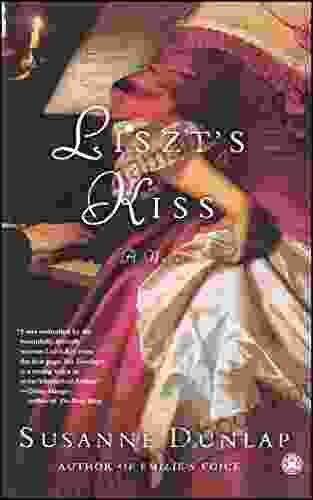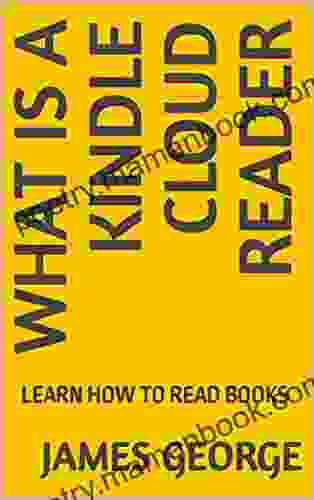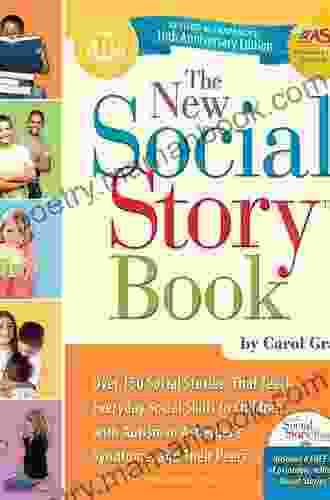Using Student Perceptions for the Development of Teaching and Teachers: A Comprehensive Guide

Student perceptions are a valuable source of information for teachers and teacher educators. They can provide insights into how students are experiencing the learning process, what they are learning, and what they need to improve. This information can be used to improve teaching practices, develop teacher education programs, and make decisions about educational policy.
There are many benefits to using student perceptions for the development of teaching and teachers. Some of the benefits include:
- Improved teaching practices: Student perceptions can help teachers identify areas where their teaching can be improved. This information can be used to develop new teaching strategies, modify existing strategies, and provide more effective feedback to students.
- Enhanced teacher development: Student perceptions can help teachers identify areas where they need to improve their knowledge and skills. This information can be used to develop professional development plans and identify opportunities for further learning.
- Informed decision-making: Student perceptions can provide valuable information for educational leaders when making decisions about educational policy. This information can be used to make decisions about curriculum, instruction, and assessment.
There are a variety of ways to collect student perceptions. Some of the most common methods include:
4.3 out of 5
| Language | : | English |
| File size | : | 4626 KB |
| Text-to-Speech | : | Enabled |
| Screen Reader | : | Supported |
| Enhanced typesetting | : | Enabled |
| Print length | : | 288 pages |
- Surveys: Surveys are a quick and easy way to collect student feedback. They can be used to collect information about a variety of topics, including teaching practices, course content, and the learning environment.
- Interviews: Interviews allow teachers to collect more in-depth feedback from students. They can be used to explore students' thoughts and feelings about specific topics.
- Focus groups: Focus groups are a good way to collect feedback from a small group of students. They can be used to explore specific topics in more detail.
- Classroom observations: Classroom observations allow teachers to see how students are interacting with the learning environment and with each other. This information can be used to identify areas where teaching practices can be improved.
Once student perceptions have been collected, they need to be analyzed in order to be useful. Some of the most common methods of analysis include:
- Quantitative analysis: Quantitative analysis involves using statistical methods to analyze student feedback. This can be used to identify trends and patterns in the data.
- Qualitative analysis: Qualitative analysis involves interpreting student feedback in order to identify themes and insights. This can be used to develop a deeper understanding of students' perspectives.
- Mixed methods analysis: Mixed methods analysis combines quantitative and qualitative methods to provide a more comprehensive understanding of student feedback.
Student perceptions can be used to improve teaching practices in a variety of ways. Some of the ways that student perceptions can be used to improve teaching include:
- Identifying areas for improvement: Student perceptions can help teachers identify areas where their teaching can be improved. This information can be used to develop new teaching strategies, modify existing strategies, and provide more effective feedback to students.
- Developing new teaching strategies: Student perceptions can help teachers develop new teaching strategies that are more effective and engaging. This information can be used to create lesson plans, design instructional materials, and develop assessment tools.
- Modifying existing teaching strategies: Student perceptions can help teachers modify existing teaching strategies to make them more effective. This information can be used to adjust pacing, change grouping strategies, and provide more opportunities for student participation.
- Providing more effective feedback to students: Student perceptions can help teachers provide more effective feedback to students. This information can be used to identify areas where students need more support and to develop feedback strategies that are more helpful and motivating.
Student perceptions can be used to develop teacher education programs that are more effective and responsive to the needs of students. Some of the ways that student perceptions can be used to develop teacher education programs include:
- Identifying areas for improvement: Student perceptions can help teacher educators identify areas where teacher education programs can be improved. This information can be used to develop new courses, modify existing courses, and provide more effective support to teacher candidates.
- Developing new courses: Student perceptions can help teacher educators develop new courses that are more relevant to the needs of students. This information can be used to create courses that focus on specific topics, such as effective teaching strategies, classroom management, and assessment.
- Modifying existing courses: Student perceptions can help teacher educators modify existing courses to make them more effective. This information can be used to adjust pacing, change course content, and provide more opportunities for student participation.
- Providing more effective support to teacher candidates: Student perceptions can help teacher educators provide more effective support to teacher candidates. This information can be used to develop mentoring programs, provide feedback on teaching, and help teacher candidates develop their professional skills.
Student perceptions can be used to make informed decisions about educational policy. Some of the ways that student perceptions can be used to make decisions about educational policy include:
- Identifying areas for improvement: Student perceptions can help educational leaders identify areas where educational policy can be improved. This information can be used to develop new policies, modify existing policies, and make decisions about funding.
- Developing new policies: Student perceptions can help educational leaders develop new policies that are more effective and responsive to the needs of students. This information can be used to create policies that focus on specific areas, such as improving teaching quality, reducing dropout rates, and increasing student achievement.
- Modifying existing policies: Student perceptions can help educational leaders modify existing policies to make them more effective. This information can be used to adjust policies, change funding priorities, and provide more support to schools and districts.
- Making decisions about funding: Student perceptions can help educational leaders make decisions about funding. This information can be used to identify areas where funding can be increased or decreased, and to develop funding formulas that are more equitable.
Student perceptions are a valuable source of information for teachers, teacher educators, and educational leaders. They can provide insights into how students are experiencing the learning process, what they are learning, and what they need to improve. This information can be used to improve teaching practices, develop teacher education programs, and make decisions about educational policy.
By using student perceptions, we can create a more effective and responsive educational system that meets the needs of all students.
4.3 out of 5
| Language | : | English |
| File size | : | 4626 KB |
| Text-to-Speech | : | Enabled |
| Screen Reader | : | Supported |
| Enhanced typesetting | : | Enabled |
| Print length | : | 288 pages |
Do you want to contribute by writing guest posts on this blog?
Please contact us and send us a resume of previous articles that you have written.
 Top Book
Top Book Novel
Novel Fiction
Fiction Nonfiction
Nonfiction Literature
Literature Paperback
Paperback Hardcover
Hardcover E-book
E-book Audiobook
Audiobook Bestseller
Bestseller Classic
Classic Mystery
Mystery Thriller
Thriller Romance
Romance Fantasy
Fantasy Science Fiction
Science Fiction Biography
Biography Memoir
Memoir Autobiography
Autobiography Poetry
Poetry Drama
Drama Historical Fiction
Historical Fiction Self-help
Self-help Young Adult
Young Adult Childrens Books
Childrens Books Graphic Novel
Graphic Novel Anthology
Anthology Series
Series Encyclopedia
Encyclopedia Reference
Reference Guidebook
Guidebook Textbook
Textbook Workbook
Workbook Journal
Journal Diary
Diary Manuscript
Manuscript Folio
Folio Pulp Fiction
Pulp Fiction Short Stories
Short Stories Fairy Tales
Fairy Tales Fables
Fables Mythology
Mythology Philosophy
Philosophy Religion
Religion Spirituality
Spirituality Essays
Essays Critique
Critique Commentary
Commentary Glossary
Glossary Bibliography
Bibliography Index
Index Table of Contents
Table of Contents Preface
Preface Introduction
Introduction Foreword
Foreword Afterword
Afterword Appendices
Appendices Annotations
Annotations Footnotes
Footnotes Epilogue
Epilogue Prologue
Prologue Randall L B Mcneill
Randall L B Mcneill John Bradley
John Bradley David Moore
David Moore Robert Louis Stevenson
Robert Louis Stevenson John Stevens
John Stevens Ananish Chaudhuri
Ananish Chaudhuri Skawt Chonzz
Skawt Chonzz Andrew E Kaufman
Andrew E Kaufman Robert C Stern
Robert C Stern Rafael Badziag
Rafael Badziag Bob Tarte
Bob Tarte Andrea Carter
Andrea Carter Kurt Johnson
Kurt Johnson Emthy A
Emthy A Dario La Rosa
Dario La Rosa The Dark Lords
The Dark Lords Eric Berger
Eric Berger Leticia Sala
Leticia Sala Martin Miller
Martin Miller Michelle Anderson
Michelle Anderson
Light bulbAdvertise smarter! Our strategic ad space ensures maximum exposure. Reserve your spot today!

 F. Scott FitzgeraldForgotten Work of Forgotten Artist Jason Guriel: Rediscovering His Lost...
F. Scott FitzgeraldForgotten Work of Forgotten Artist Jason Guriel: Rediscovering His Lost...
 Darrell PowellUnveiling the Enthralling Liszt Kiss Novel by Susanne Dunlap: A Literary...
Darrell PowellUnveiling the Enthralling Liszt Kiss Novel by Susanne Dunlap: A Literary... Curtis StewartFollow ·6.1k
Curtis StewartFollow ·6.1k Joshua ReedFollow ·5.3k
Joshua ReedFollow ·5.3k Denzel HayesFollow ·12.5k
Denzel HayesFollow ·12.5k Lord ByronFollow ·7k
Lord ByronFollow ·7k Michael CrichtonFollow ·18k
Michael CrichtonFollow ·18k Jacob FosterFollow ·9.8k
Jacob FosterFollow ·9.8k Corey GreenFollow ·5.8k
Corey GreenFollow ·5.8k Don ColemanFollow ·3k
Don ColemanFollow ·3k

 Patrick Hayes
Patrick HayesDeath on Stage: Euphemia Martins Mystery 16
Synopsis In the...

 Benji Powell
Benji Powell1001 Best Baking Recipes Of All Time
Baking is a fun and...

 Terry Bell
Terry BellDestined War of the Covens: A Supernatural Saga of Power,...
Welcome to the...

 Mark Twain
Mark TwainBitcoin For Mere Mortals: A Comprehensive Guide for...
Bitcoin is a...

 Dennis Hayes
Dennis HayesThe Best Budget Gaming PC 2024: Build the Ultimate Gaming...
Are you looking to build the best budget...
4.3 out of 5
| Language | : | English |
| File size | : | 4626 KB |
| Text-to-Speech | : | Enabled |
| Screen Reader | : | Supported |
| Enhanced typesetting | : | Enabled |
| Print length | : | 288 pages |










